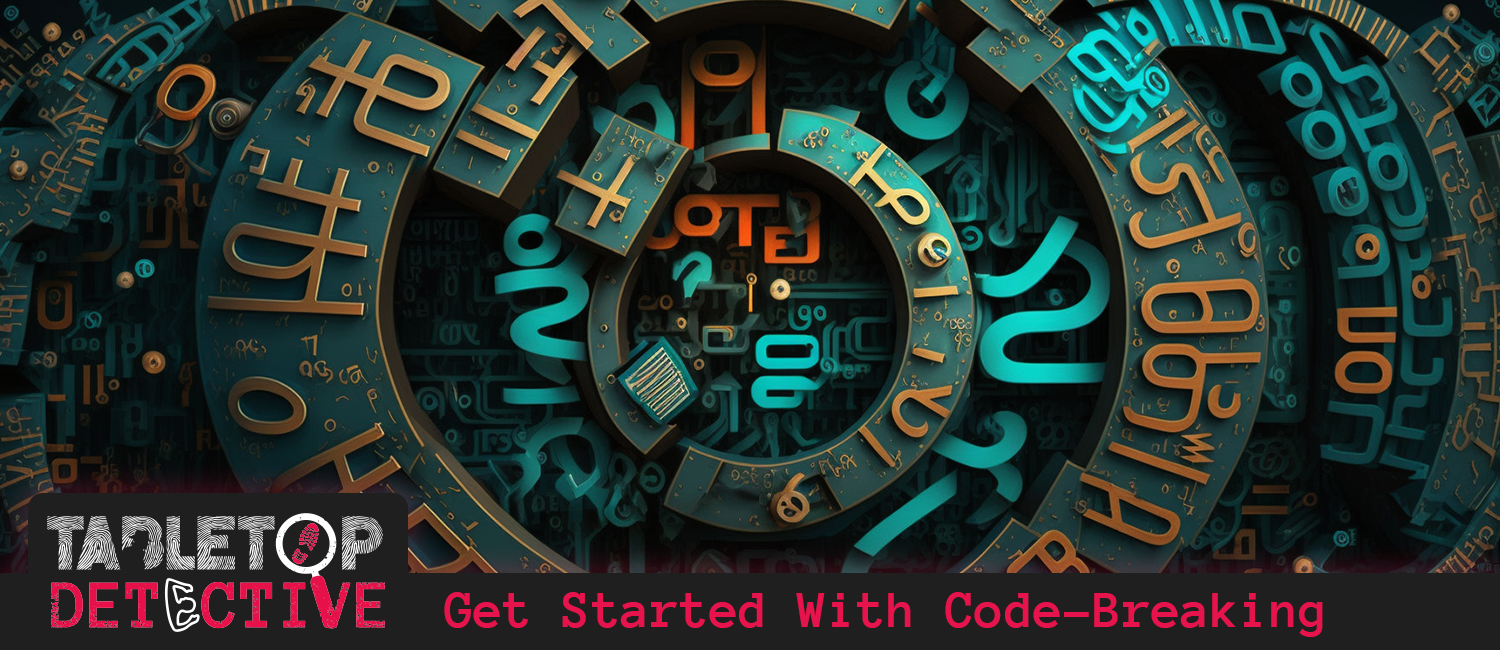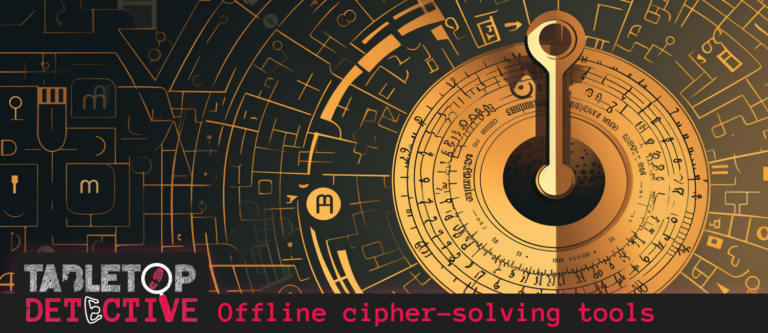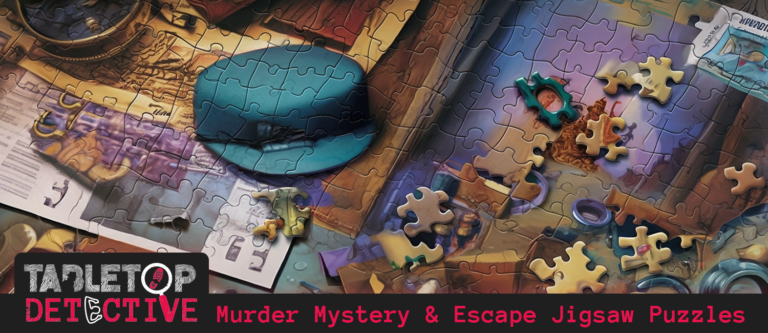Code-breaking is a fascinating field that involves analyzing and decrypting messages that have been encoded or encrypted using various methods. From ancient times to modern-day encryption techniques, code-breaking has played a crucial role in military, diplomatic, and intelligence operations. Most relevantly, it’s a common element in many play-at-home mystery games. In this blog post, we will explore the basics of code-breaking and ciphers, including the history of code-breaking, common types of ciphers, and how to get started with code-breaking.
History of Code-breaking
Code-breaking has been around for centuries, with examples dating back to ancient times.
One of the most famous early examples is the Caesar cipher, which was used by Julius Caesar to send secret messages to his generals. The Caesar cipher involves shifting each letter of the alphabet by a certain number of positions. For example, if the shift is three positions, the letter A would become D, B would become E, and so on.
During World War II, code-breaking became a critical part of the war effort. The German military used a sophisticated encryption machine called Enigma, which was believed to be unbreakable. However, a team of code-breakers at Bletchley Park in England, led by Alan Turing, used the first computer to crack the Enigma code, which historians credit with shortening the war by as much as two years.
Types of Ciphers
There are several types of ciphers, each with its unique method of encoding and decoding messages. Some of the most common types of ciphers include:
Substitution Ciphers: Substitution ciphers involve replacing each letter of the alphabet with a different letter or symbol. For example, the letter A could be replaced with an asterisk (*), and the letter B could be replaced with a dollar sign ($).
Shift Ciphers: A shift cipher is a type of substitution cipher that involves shifting each letter of the alphabet by a fixed number of positions. For example, in a shift cipher with a shift of 7, the letter A would become H, B would become I, and so on. The Caesar Cipher and the Atbash Cipher are examples of shift ciphers.
Transposition Ciphers: Transposition ciphers involve rearranging the letters of a message to create a new message. For example, the message “THE QUICK BROWN FOX” could be rearranged to “QFKCWXNTOHBIREU.” If you’ve ever solved an anagram, you’ve decoded a transposition cipher.
Alphabetic Ciphers: An alphabetic cipher is a type of substitution cipher that involves replacing each letter of the alphabet with a different letter. The Atbash Cipher, the Beaufort Cipher, and the Autokey Cipher are examples of alphabetic ciphers. Many puzzle games also rely on clues involving common alternate alphabets like Braille, Semaphore, and the NATO phoenetic alphabet, along with alphabetic systems made specifically for codes, like the Pigpen Cipher.
Polyalphabetic Ciphers: Polyalphabetic ciphers use multiple alphabets to encode a message. One example is the Vigenère cipher, which involves using a keyword to determine which alphabet to use for each letter of the message.
Getting Started with Code-breaking
If you’re interested in getting started with code-breaking, there are several steps you can take.
Learn the basics of cryptography: Start by learning the basics of cryptography, including the different types of ciphers and how they work. There are many online resources available, including videos, tutorials, and books.
Practice solving ciphers: Once you understand the basics, start practicing solving ciphers. There are many online resources that provide examples of ciphers to solve, as well as tools to help you decode messages.
Join a community: There are many online communities of code-breakers, where you can connect with other enthusiasts, share tips and tricks, and collaborate on solving more challenging ciphers.
Attend events and competitions: There are also events and competitions for code-breakers, where you can compete against others to solve challenging ciphers. These events provide a great opportunity to learn from others and improve your skills.
Code-breaking resources
Historical Media
- Imitation Game: If you’re interested in learning more about Alan Turing’s work decoding Enigma during WWII, the docudrama Imitation Game is a fascinating study of one of recent history’s code-breaking triumphs.
Tools for Code-breaking
- Caeser cipher wheel: Rather than manually writing out your shifted alphabet every time (as we used to), a Caesar cipher wheel let’s you reference your shifted alphabet easily.
- Decoder ring: A decoder ring is a small device that consists of a rotating outer ring with letters or numbers on it, and a fixed inner ring that has the same letters or numbers in a different order. With the added bonus of making you feel like a spy.
- Alphabetic Codes poster: For a beautiful and convenient quick reference for many common alphabetic codes, grab a copy of the Tabletop Detective’s Alphabetic Codes poster.
- Online code solver: For more complex ciphers, you’ll need more than a simple gadget to crack the code. Solve your keyword ciphers, Vigenère ciphers, and more with our favorite tool: dCode.
Practice Code-breaking
The best way to practice code-breaking is to do it. Here are some mystery games with ciphers to wet your feet. As you start out, look for games with low difficulty. Here are some we enjoyed:
- Emerald Flame (PostCurious)
- Dead Below Deck (Hunt a Killer)
- Down the Rabbit Hole (Deadbolt Mystery Society)
- Polar Station (Exit the Game)
Code-breaking is a fascinating field that requires a combination of analytical and creative thinking. Whether you’re interested in history, cryptography, or puzzles, code-breaking is a great hobby to explore. By learning the basics, practicing solving ciphers, and connecting with other code-breakers, you can develop your skills in this exciting field.




